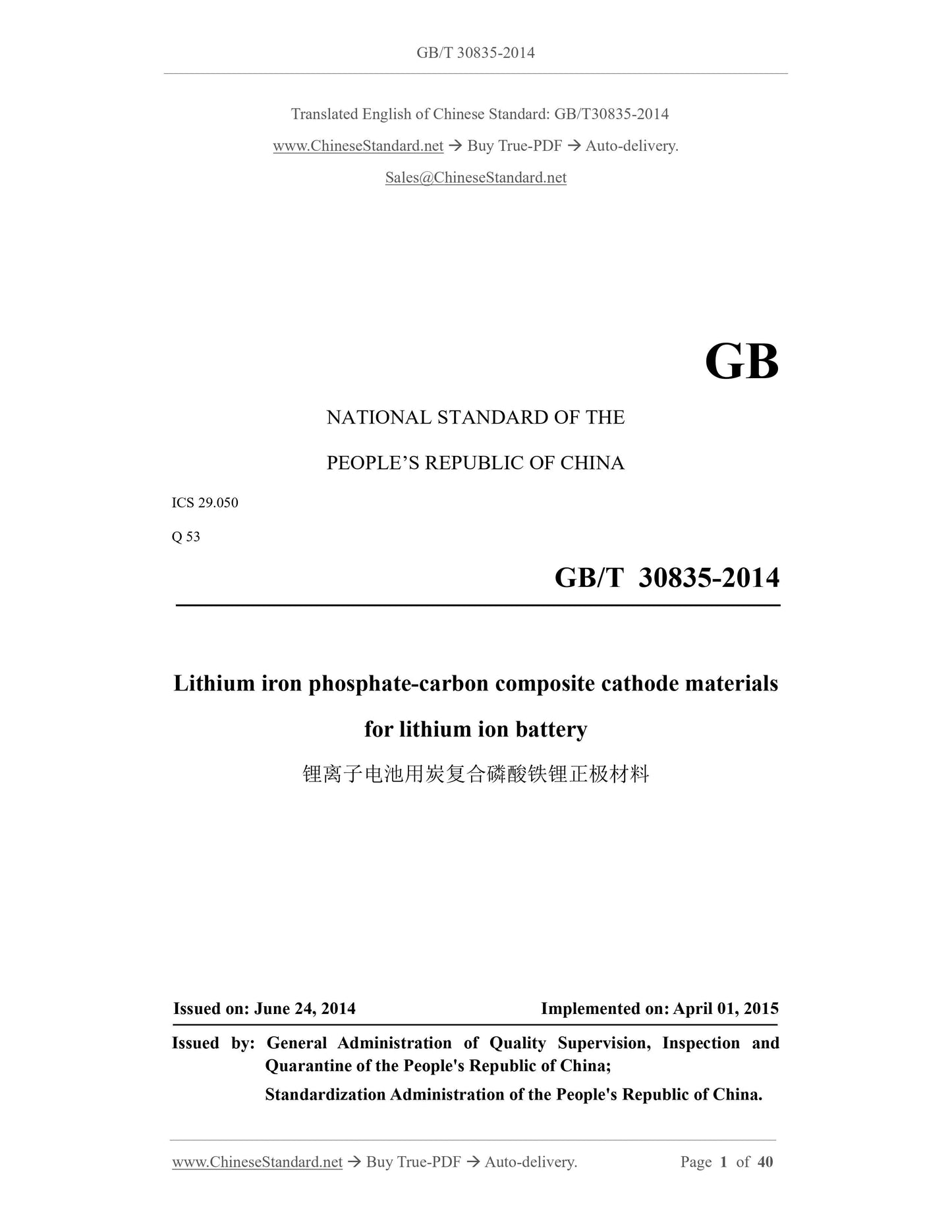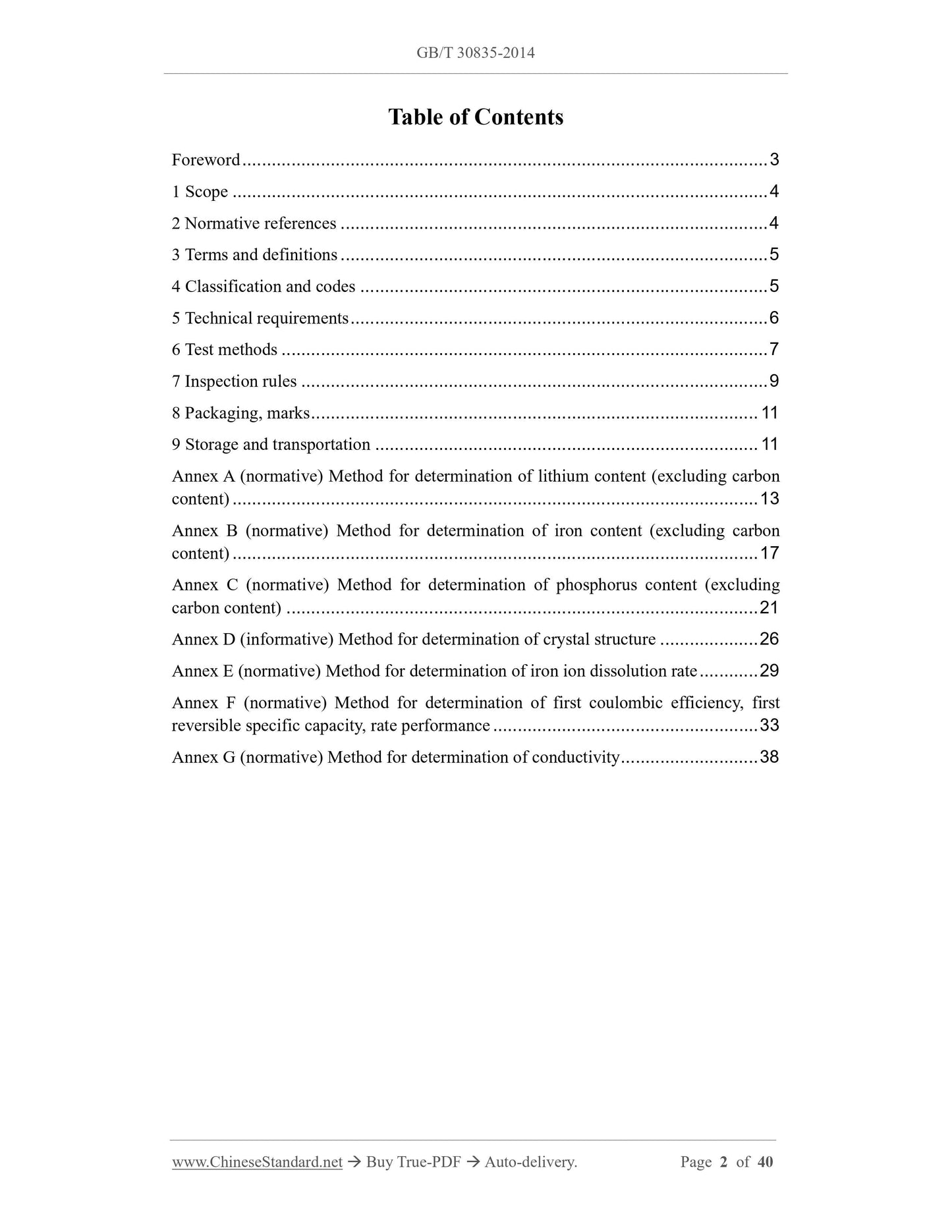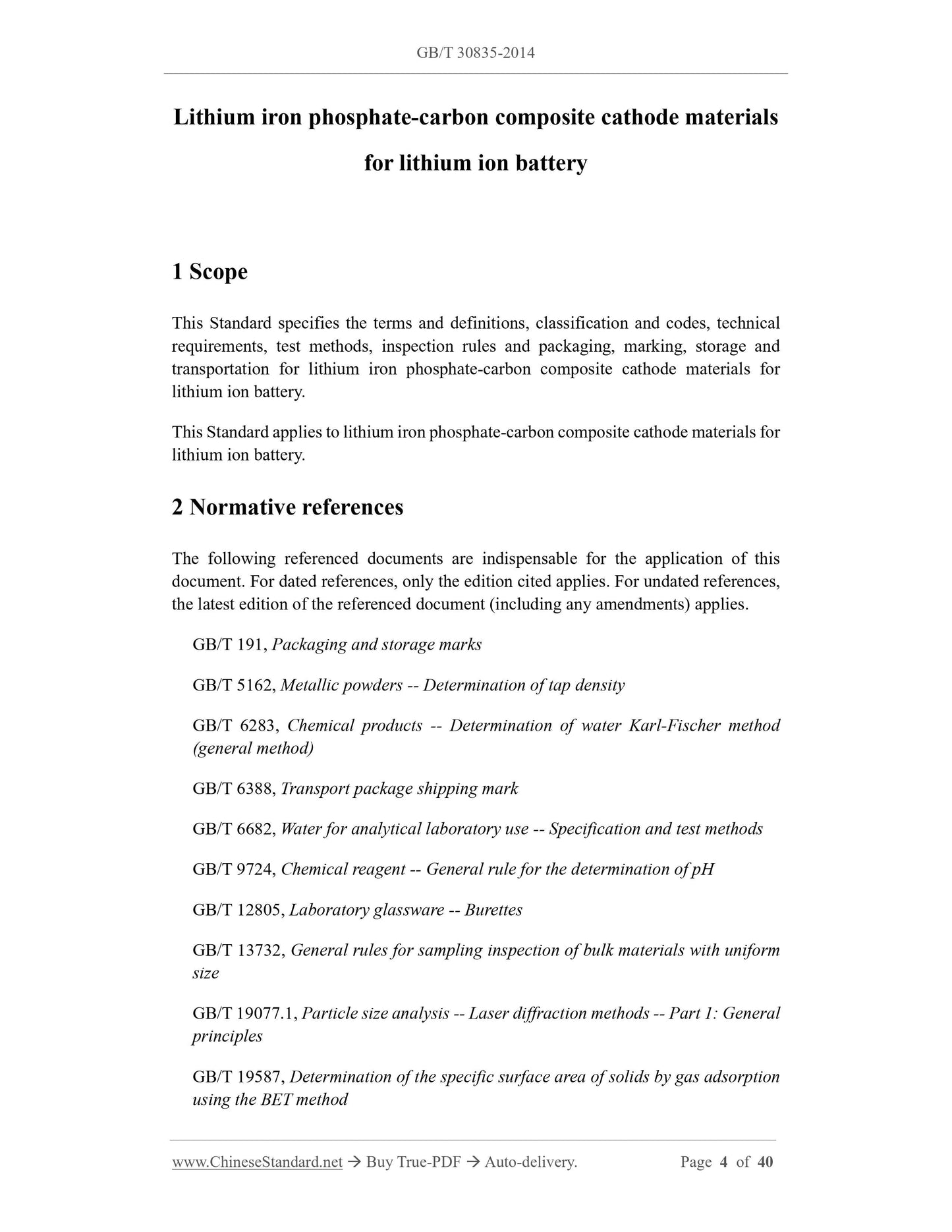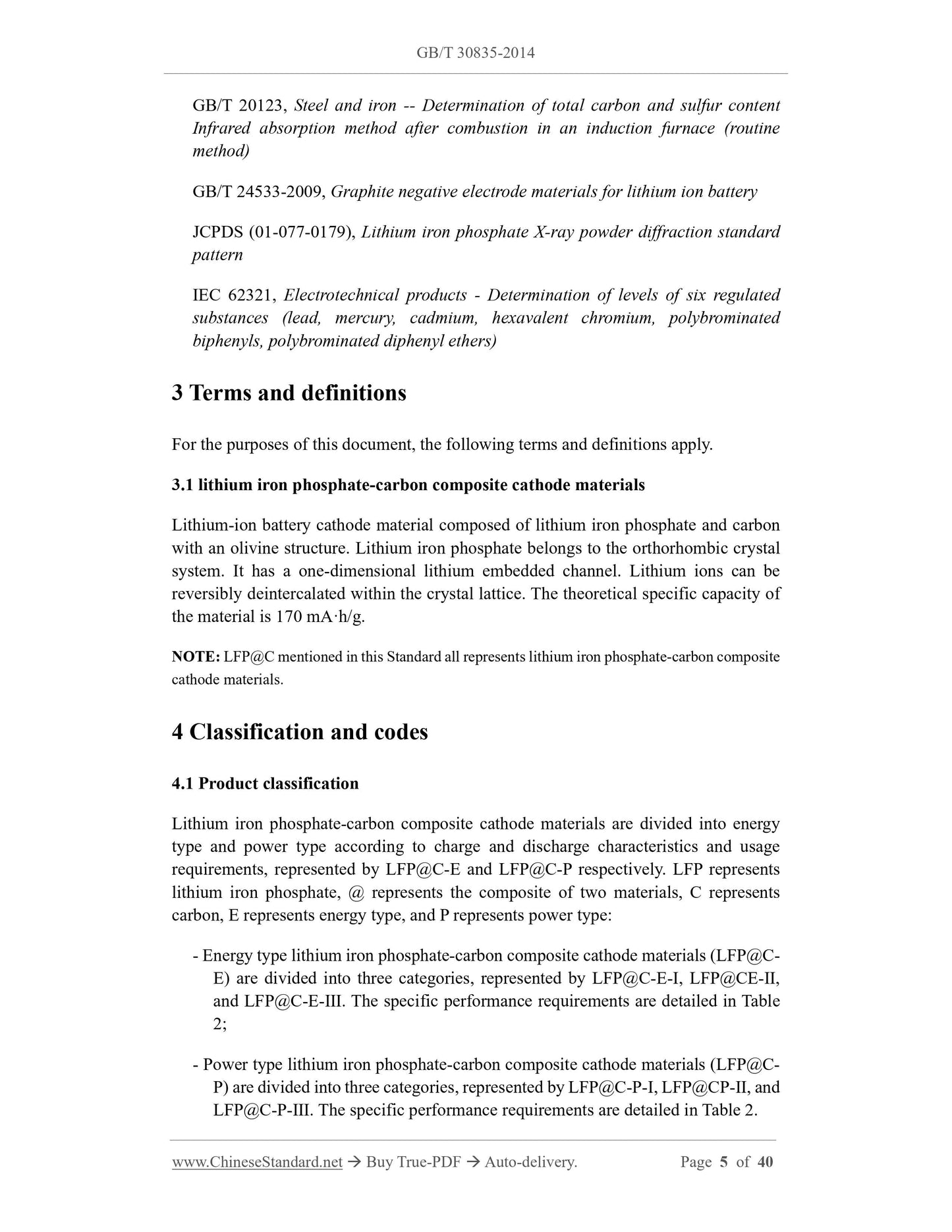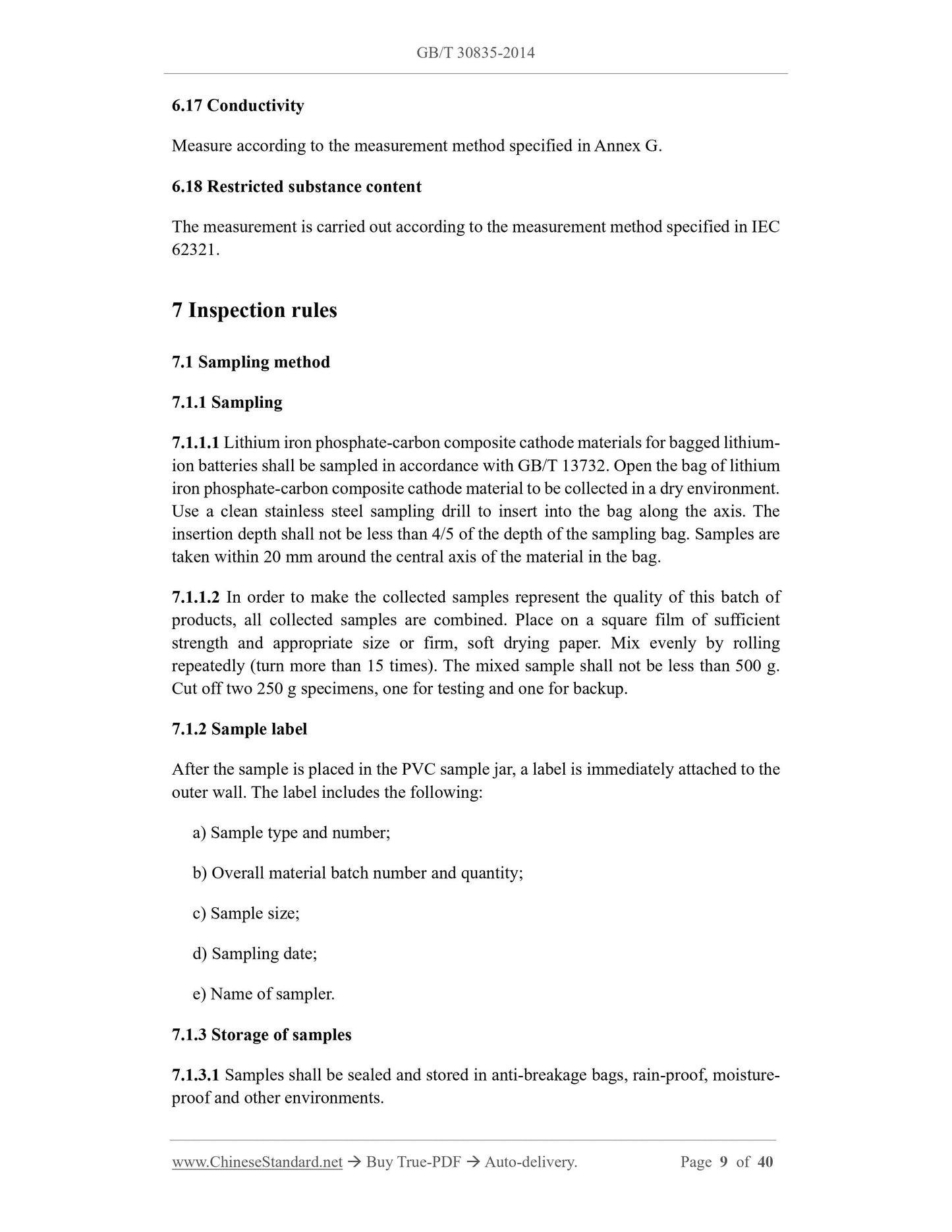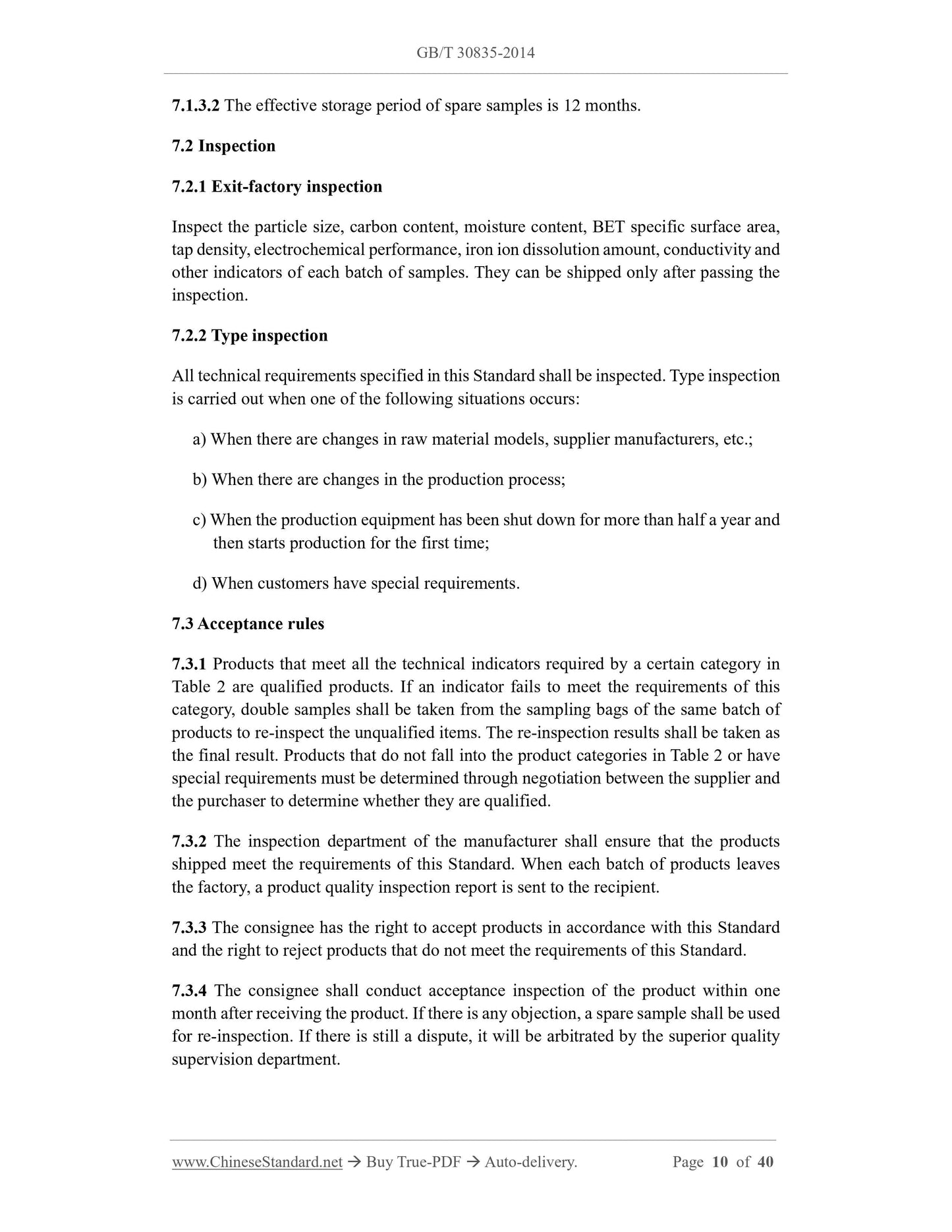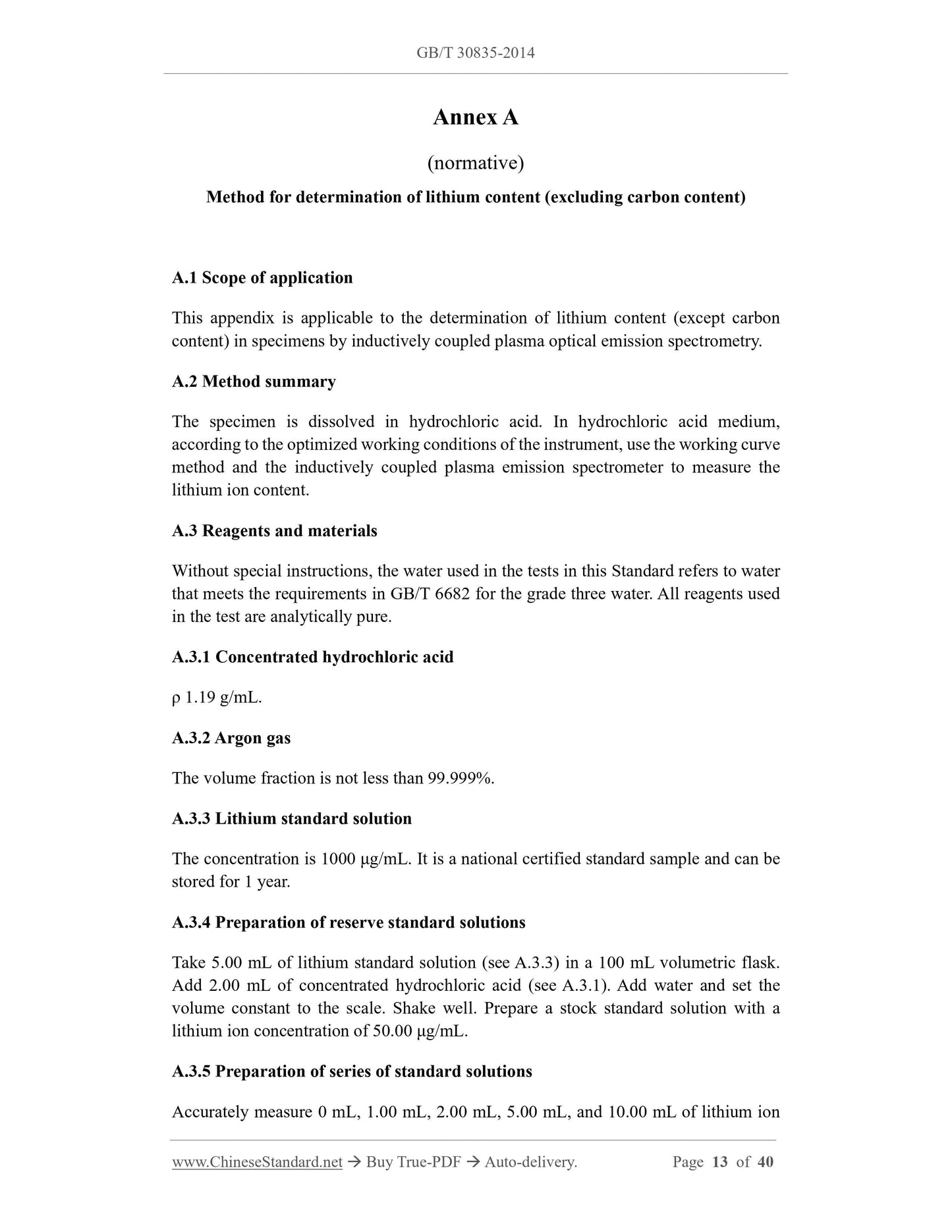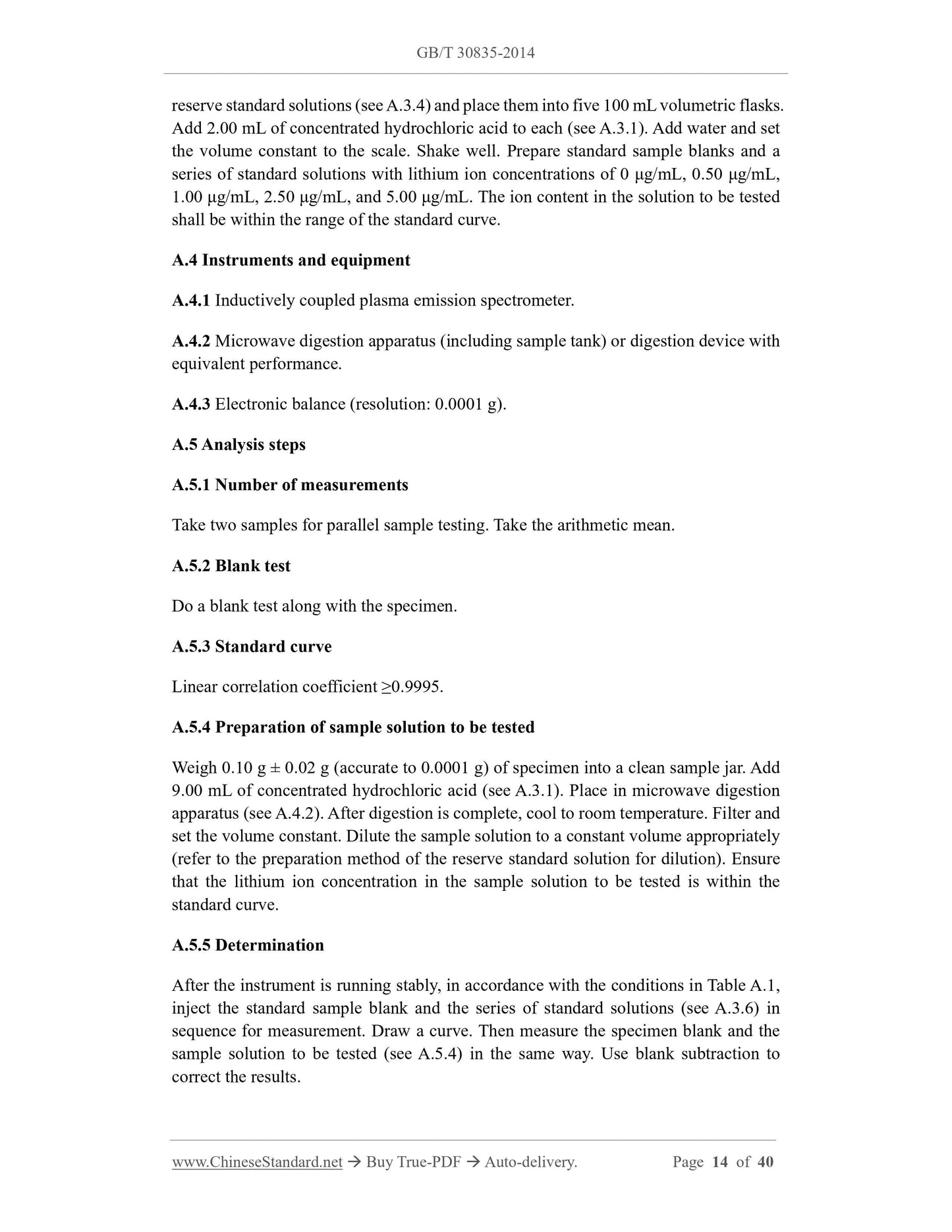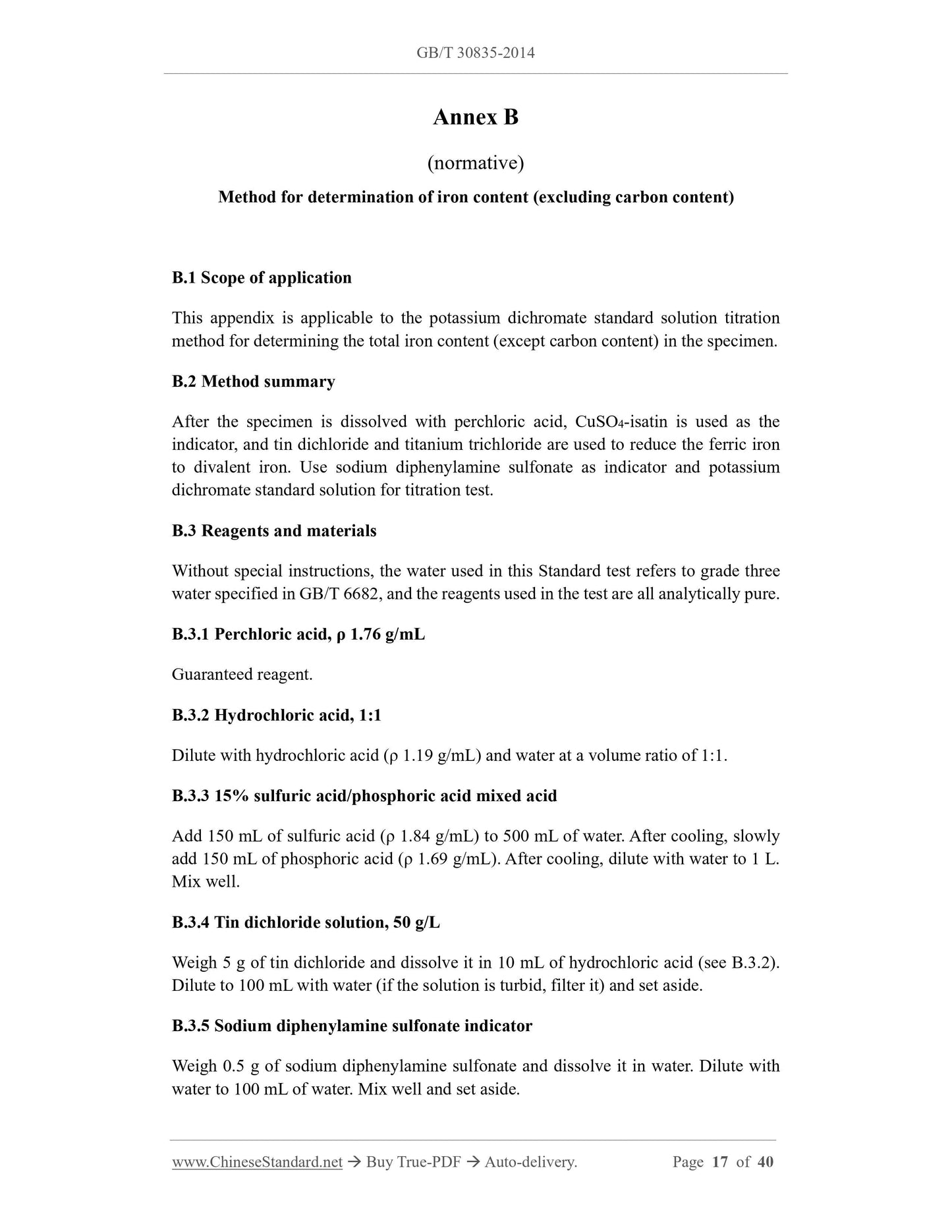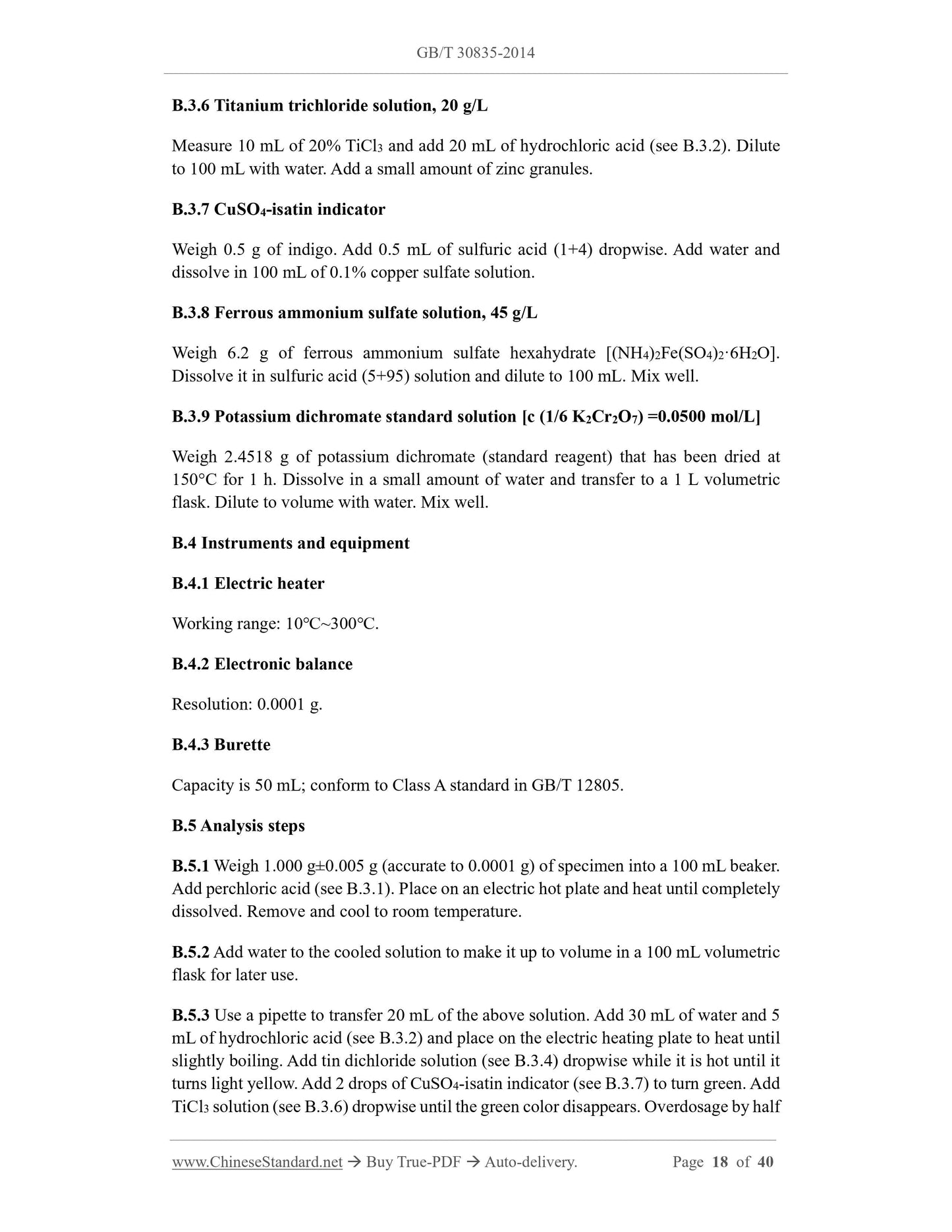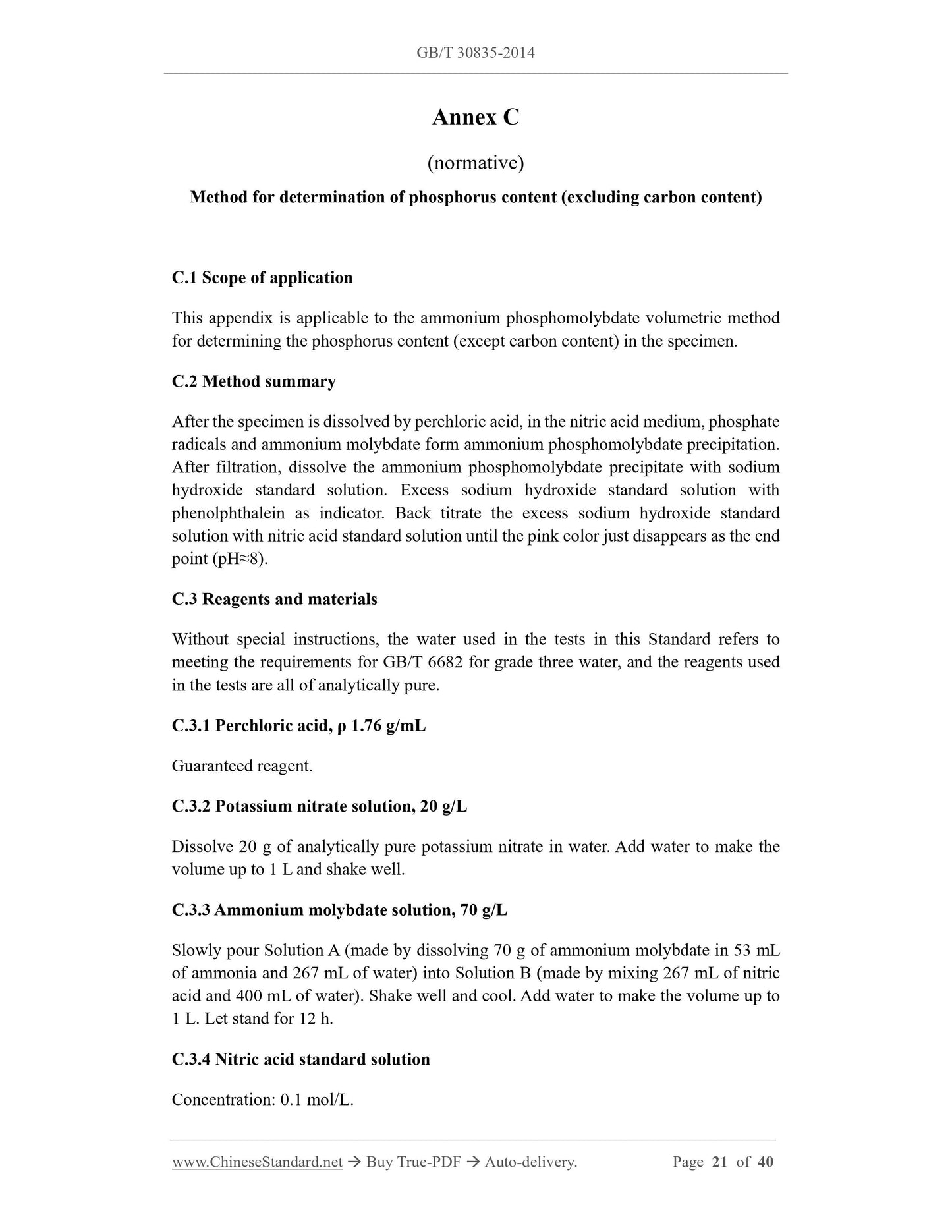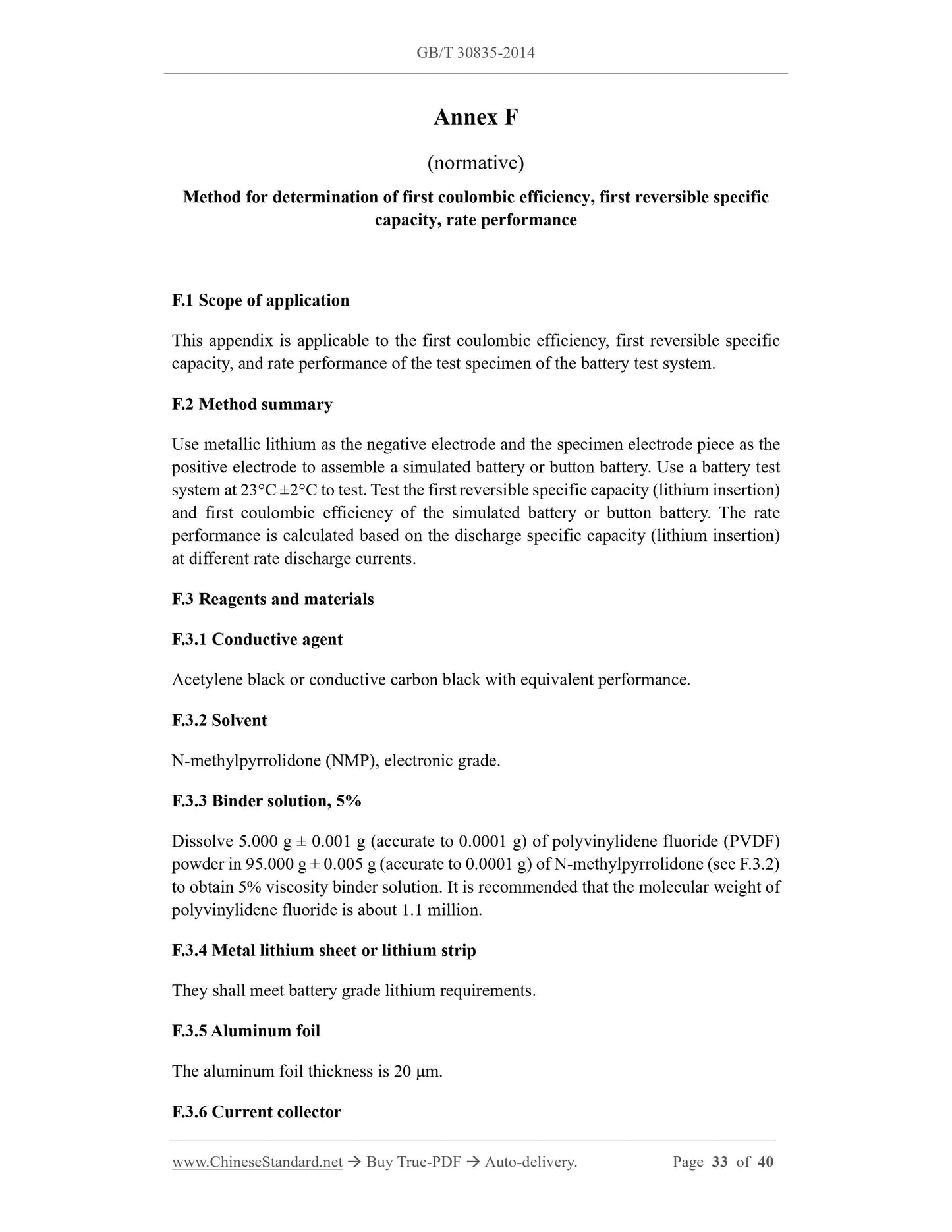1
/
of
12
www.ChineseStandard.us -- Field Test Asia Pte. Ltd.
GB/T 30835-2014 English PDF (GB/T30835-2014)
GB/T 30835-2014 English PDF (GB/T30835-2014)
Regular price
$430.00
Regular price
Sale price
$430.00
Unit price
/
per
Shipping calculated at checkout.
Couldn't load pickup availability
GB/T 30835-2014: Lithium iron phosphate-carbon composite cathode materials for lithium ion battery
Delivery: 9 seconds. Download (and Email) true-PDF + Invoice.Get Quotation: Click GB/T 30835-2014 (Self-service in 1-minute)
Newer / historical versions: GB/T 30835-2014
Preview True-PDF
Scope
This Standard specifies the terms and definitions, classification and codes, technicalrequirements, test methods, inspection rules and packaging, marking, storage and
transportation for lithium iron phosphate-carbon composite cathode materials for
lithium ion battery.
This Standard applies to lithium iron phosphate-carbon composite cathode materials for
lithium ion battery.
Basic Data
| Standard ID | GB/T 30835-2014 (GB/T30835-2014) |
| Description (Translated English) | Lithium iron phosphate-carbon composite cathode materials for lithium ion battery |
| Sector / Industry | National Standard (Recommended) |
| Classification of Chinese Standard | Q53 |
| Classification of International Standard | 29.050 |
| Word Count Estimation | 31,333 |
| Date of Issue | 6/24/2014 |
| Date of Implementation | 4/1/2015 |
| Quoted Standard | GB/T 191; GB/T 5162; GB/T 6283; GB/T 6388; GB/T 6682; GB/T 9724; GB/T 12805; GB/T 13732; GB/T 19077.1; GB/T 19587; GB/T 20123; GB/T 24533-2009; JCPDS 01-077-0179; IEC 62321 |
| Regulation (derived from) | National Standards Bulletin No. 14 of 2014 |
| Issuing agency(ies) | General Administration of Quality Supervision, Inspection and Quarantine of the People's Republic of China, Standardization Administration of the People's Republic of China |
| Summary | This standard specifies the terms and definitions of lithium-ion battery carbon composite lithium iron phosphate cathode material, classification and code, technical requirements, test methods, inspection rules, packaging, labeling, storage and transport. |
Share
